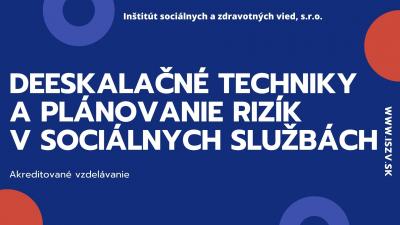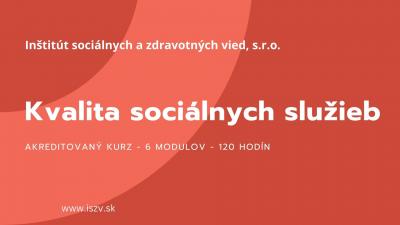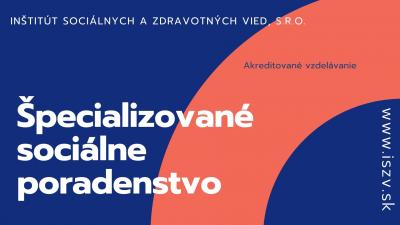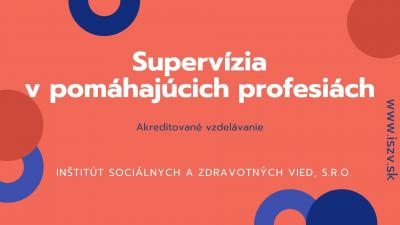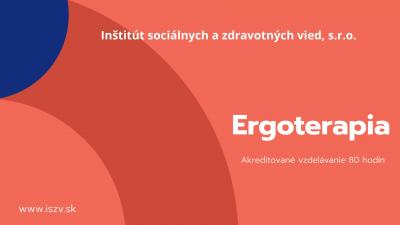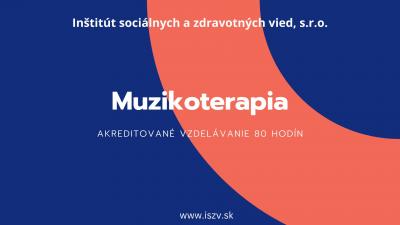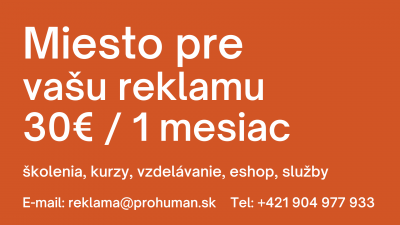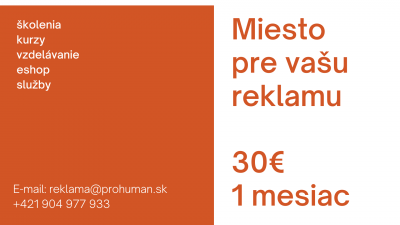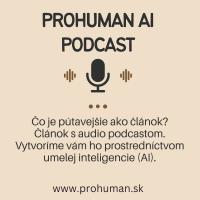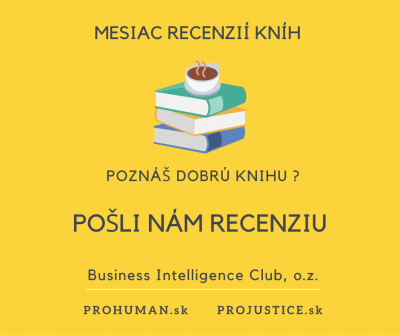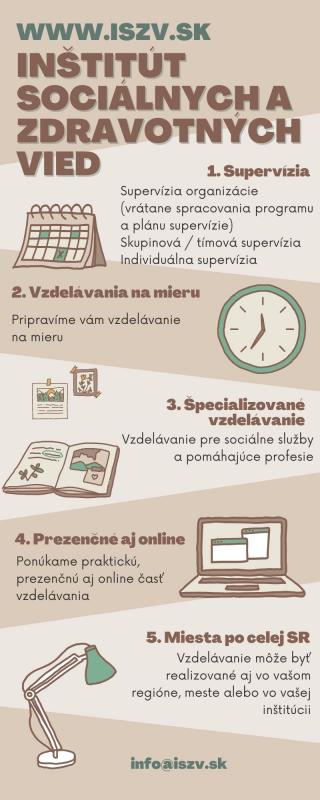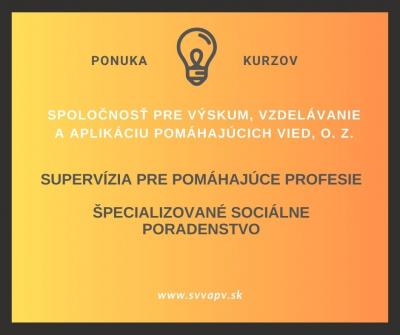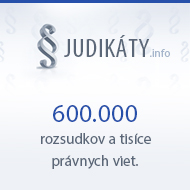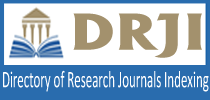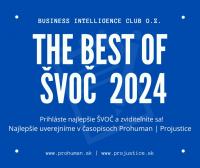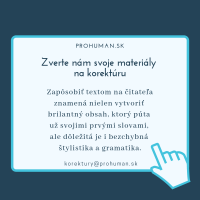Abstract: The first considerations regarding increasing media competencies as part of a person's standard education in post-modern society first emerged in post-war Europe. Currently, the topic of media education is implemented into the content of general education in most European countries. This issue is mostly integrated into compulsory subjects, in some countries it is a cross-cutting theme in several subjects, and in some other countries increasing media competencies is part of extracurricular education. The situation is differentiated in individual countries with the longest experience and highest results in Europe, so far, being in Anglo-Saxon and Scandinavian countries.
Key words: educational process, media education, media literacy, students.
Introduction
The idea that media gets the credit for today's cultural and moral state of society in our country and the world, has been confirmed by several experts in their writings (E. Fandelová, A. Lesková, 2010, M. Košková, 2011, T. Koprda, 2012, G. Kapusta, 2013). W. J. Potter (2013) distinguishes four main problems that arise in contact with the media: information saturation, false sense of awareness, false sense of control and false beliefs. For education, whose goal is to achieve media competences, respectively media literacy, the expression media education is used. D. Buckingham (2005, p. 4) considers under the term media education ,,the development of critical understanding abilities and their ability to be actively received“. He identified the development of media education growth in Great Britain into four stages: the stage of media culture suppression and the effort to resist it, the stage of popular and media culture acceptance, the stage of media demystification and the stage of new approaches (D. Buckingham, 2005). Current educational processes in the field of raising media literacy consist of three basic concepts of media education: ,,the concept of recipients protection, the concept of achieving media literacy and the concept of techniques and methods by professionals“ (D. Bína, 2006, p. 352).
The professional community is not terminologically clear whether to use the term media literacy, respectively media competence in theory or practice. The term media competence is typical for pedagogical theory and is practised predominantly in German-speaking countries. We have decided to use the term media literacy, since this term also appears in documents of European institutions. For example, the European Parliament resolution from December 16, 2008 on media literacy in the digital world (2008/2129 (INI)) in paragraph 8 states that 'media literacy means to have the ability to use different media independently, to understand various aspects of the media and media content and critically judge them, as well as to communicate in different contexts and create and disseminate media content '. The document also notes that in the large amount of available resources the most important is the ability to specifically filter and sort information from the flood of data and images coming from the new media.
The concept of media literacy is most often quoted from the general definition, which is the result of an international conference at The Aspen Institute Wye Centre in America in 1992: ,,Media literacy is the ability to access, analyse, evaluate and create information with specific outputs and in different formats' (M. CH. Firestone, 1992). Media literacy also ,,indicates competence in using a variety of media or skill levels and abilities in the use of media devices” (D. Chandler, R. Munday, 2011, p. 265). According to a different definition ,,media literacy is about understanding the sources and communication technologies, codes that are used, production reports, their selection, interpretation and implications of these reports” (J. S. Baran, D. K. Davis, 2011, p. 358).
However, differences in opinions still persist, for example, whether the increasing of media literacy should be conceived as an individual success, or as part of social and cultural practices, respectively, how much of an emphasis should be put on media criticism, and whether it is better to achieve media literacy through education or civic initiatives (M. Ilowiecki, T. Zasępa, 2003, W. Donsbach, 2008, L. Mandelíková, 2014).
Implementation of media education in the world
The situation in each country is different. The Anglo-Saxon countries have the longest experience and the greatest results so far. Australia enacted media education in pre-school, primary and secondary schools (up to grade 12) in the mid-1990's. In Australia, media education began to be promoted as a part of the subjects within which languages, literature and art are taught. Since the late 20th century, media education is in almost all Australian states a compulsory subject as a part of teaching English (D. Buckingham, 2005, A. Parola, M. Ranieri, 2011). The Canadian province of Ontario introduced media education for 7 to 12 year olds in 1987. Since the late 20th century, media education in Eastern and Western Canada has been inbcluded as part of English language subjects. In other provinces it is also taught in the context of civics, hygiene, civics education or occupation education (S. Brečka, 1999). The United States significantly lags behind other countries in the implementation of media education. Introducing the subject is slowed by the fact that each of the 50 states has its own school administration. In addition, most parents consider computer literacy more important than media literacy.
Media Education in Western Europe
Currently, media education is included into the content of general education in most European countries, where it is mostly integrated into compulsory subjects, especially the mother langauge, communication education as an interdisciplinary subject, sociology, psychology, art history and others. In some countries, it is a part of extracurricular education.
Media education in the UK is firmly anchored in the domestic curricula. The public television BBC has a rich educational tradition, it has been providing television broadcasts for schools since 1957. The Institute of Education (Institute of Education) at the University of London is responsible for preparing media education teachers in Great Britain. Media education in Great Britain is currently a part of the school subject English language and it teaches students to develop critical opinions of media texts and media institutions (M. Brestovanský, 2010).
In France, media literacy has been a part of the minimum conditions for education in the field of social and civic competences since 2006, Belgium integrated media education into the content of education for music education and foreign languages. In Germany media education recorded its largest boom in the 1960's and 1970's. Currently, media education in Germany is a part of selected compulsory subjects (German, aesthetics, respectively Art, Music and Social education). With regards to the development of media education in a European context it is worth noting the experience of Scandinavian countries, since, according to several international assessments, their educational systems are among the best in the world and their positive features are also reflected also in the field of media education. Finland, which puts special emphasis on functional and digital literacy has made the biggest progress (J. Mommers, 2013).
Media education in Finland is currently incorporated into the interdisciplinary subject of communication education, while some secondary schools teach media education as part of individual courses. A strong emphasis on building media competence is incorporated in the Swedish and Danish educational system as well, where the elements and thematic areas of media education are a part of several compulsory elements (N. Vrabec, 2013). Sweden, Denmark and Austria have integrated the development of media competence into the curricula of other compulsory subjects.
Media Education in Central Europe
Among the countries of Central Europe the greatest progress has been made in Slovenia, Hungary and the Czech Republic. Media education in Slovenia has been a part of the school curricula since 1996. Its content focuses on a balanced combination of critical and analytical evaluation of media content and a component aimed at practical media creation by students. Probably the greatest progress in the development of media education has been made in Hungary since, in 1996, the Hungarian government supported the introduction of a new subject called visual culture and media education, which has become a part of the new national education curriculum. The subject was first included into the school curriculum in 1998/1999. Training programs for teachers have been conducted since the mid-1990's. In some schools, media education is taught as a separate subject, while in other schools it is taught as a part of other subjects - for example Informatics, subjects with an educational focus, and so on (A. Fedorov, 2008, N. Vrabec, 2013).
In the Czech Republic only recently have the long-term efforts to institute a systematic curriculum for the issue of media been completed. Teachers at primary schools and high schools, since school year 2007/2008, have had the task of cultivating the development of media literacy among their students. Since the school year 2009/2010, the same also applies to higher grades at high schools. The concept of media education for the General Education Programme for elementary school education and the General Education Programme for high school education has been developed by the Centre for Media Studies at the Faculty of Social Sciences at Charles University in Prague, its author was Jan Jirák (R. Wolák, J. Jirák, 2009).
Genesis of media education implementation in Slovakia
Media education has been a part of the research and development tasks of the State Pedagogical Institute since 2003; since then a team of experts has worked on the introduction of media education into the formal education system as a part of a project for the experimental verification of a new voluntary and optional subject for primary schools and eight-year grammar schools. Between the years 2003 - 2005 the Institute participated in the project CESTY (Paths - Background, objectives and strategies of implementation of the national program of education and training). As part of the job a proposal was also worked out for incorporating media education as an innovative element into the education content at primary and secondary schools. During he first stage of this problem solving a team led by Viera Kačinová prepared a proposal for an optional and elective subject of media education for Grades 5 - 9 at primary schools and 1 - 4 at high schools. ŠPÚ (the State Pedagogical Institute) was involved in the integration of media education into the content of the the subject “Slovak language and literature” as part of the project KEGA - Backgrounds, objectives and concept at primary and secondary school. Subsequently, in June 2005 MŠVVaŠ SR (the Slovak Republic Ministry of Education, Science, Research, and Sport) approved the project of experimental verification: Media education as a compulsory subject at primary schools and eight-year grammar schools. At the same time the Ministry of Education approved the request of ŠPÚ, as an amendment, concerning the conditions for the professional and educational competences of media education teachers (V. Kačinová, 2007). A handbook focused on the issue of media and media education was also published in the academic year 2007/2008 by the Movement of Christian communities and children titled “My @ media” (J. Högerová, 2007).
Projects for preparing new teachers, who were supposed to teach media education, were once again launched on university grounds. In 2007, the Faculty of Mass Media Communication and Advertising at St. Cyril and Methodius University in Trnava organized a scientific conference called 'Media competence in the information society' in Smolenice, where, within the section “Media education”, there were 13 lectures provided on the subject (V. Kačinová, 2007, p. 136). This professional event most likely contributed to the Concept of media literacy education in secondary schools in the Slovak Republic, which was released by FMK UCM in Trnava in 2008. In the work, the team of authors developed a publication containing methodological and organizational practices and forms of work, including the concept, textbooks and teaching aids for the 33 thematic units. The university issued the publication as part of a European project, which it had begun in 2006. Part of the project was the training of secondary school teachers to teach media education, which was implemented in three vocational courses during 2008. At the same time, in 2008, a training project for a two-year qualifying specialized study was under way at ŠPÚ in collaboration with the Department of Slovak language at the Faculty of Arts at Constantine the Philosopher University in Nitra. The project Media education as part of the teaching of Slovak language and literature was designed for university graduates of the second-degree in the field of teaching academic, artistic-educational, educational and vocational subjects, who would be able to obtain the competence to teach the subject media education for a transitional period.
The first significant step in the Slovak Republic was the adoption of a system of classification of television programs and their labelling by given graphic symbols in 2003 from the initiative of the Council for Broadcasting and Retransmission. Act No. 343/2007 Coll. regarding the conditions of registration, public distribution and preservation of audiovisual works, multimedia works and sound recordings of artistic performances and on amendments to certain acts from June 20, 2007 in part the Protection of the under-aged, introduction of a single system of labelling audiovisual works, sound recordings of artistic performances, multimedia works and programs as well as other components of program services by age appropriateness in terms of their inaccessibility, unacceptability or unsuitability for under-aged youths up to 7, 12, 15 or 18 years of age (Law 343/2007).
The real implementation of media education occurred on Dec. 16, 2009, when the Government of the Slovak Republic approved Resolution No. 923 on the draft concept of media education in the Slovak Republic in the context of lifelong learning. The document indicated the limits of the development of this new subject for future years. The concept illustrates the current state of education in the media field in the world compared to the conditions in Slovakia. It defines the objectives, strategies and forecast for the creation of an effective system of media education within the context of lifelong learning (Concept, 2009). Preparation of the concept was made by an interdepartmental working group of the Ministry of Culture, which included the Ministry staff as well as representatives from MŠVVaŠ SR, ŠPÚ, independent institutions, non-governmental organizations with participation from other independent experts as well. Basic documents of the European Union, the Council of Europe and UNESCO have also been incorporated into the concept. The necessity of creating conditions for the implementation of media education in Slovakia and encouraging media literacy levels of EU citizens was accelerated by the directive from the European Parliament and the Council No. 2007/65/EC from December, 11, 2007 amending the Directive of Council 89 on the coordination of certain law regulations, other law regulations or administrative action in Member States concerning the performance of television broadcasting activities (Audiovisual Services Directive), which was implemented in the legal system of the Slovak Republic (Concept, 2009).
In 2010 there was a significant shift in the implementation of media education brought about by a conference on the topic “Media Education”, which was held in an open space for representatives of the Ministry of Culture of the Slovak Republic, university lecturers, media education teachers as well as experts from independent organization. The Director General for the section on media, audiovisual and copyright within the Ministry of Culture and Tourism of the Slovak Republic stated that there was no research institution in Slovakia with a grip on media and communication technology that could chronologically map the evolution of the media environment, summarize the current results of partial research projects in the field of media and, on the basis of this, could anticipate progressive trends and subsequently submit proposals for solutions. She also made sure that the aim of the concept of media education in Slovakia from December 16, 2009, was the creation of a Media education Centre and inter-departmental working group that would, on the basis of the Government Resolution, supervise the ongoing tasks of implementation (Slavíková, 2010). Before long, in early 2011, the Centre of media literacy IMEC, was created by an initiative from the Faculty of Mass Media Communication at the University of St. Cyril and Methodius in Trnava in February 2011. The centre has been in operation for only a short time and thus it would be premature to evaluate its activities. The academic, as well as the professional community, however, expect this centre to produce a radical increase in activities concerning the implementation of media education in Slovakia.Currently, media education is a cross-cutting topic within more established compulsory subjects. Based on the decision MŠVVaŠ SR media education can even be taught as a separate optional elective subject.
Studies of media literacy
The state of media literacy, respectively the media or communication behaviour of children and youth has been, in recent years, assessed by many studies. Part of them have been dedicated to detecting the level of media literacy and media skills while another part of the projects evaluates the current system of education in the field of media education. S. Livingstone and S. van der Graaf (see: W. Donsbach, 2008) from the London School of Economics and Political Science state that pupils aged 7 - 11 years of age are in a transitional phase of media literacy. Seven to eight year old children begin to distinguish between the genres of programs presented to them, in which they tend to find realism and more negative information. As a rule, after the age of eight pupils are competent in discerning the context of the overall story, making conclusions and sequencing the causation of morality in the story. Furthermore, in this period they show a growing interest in the production. At 10 or 11 years of age, children criticize the acting, stories and aspects of the television story and, more on the basis of their own social knowledge, they assess the realism of television content. Finally, from about the age of 12 pupils show an awareness of bias, they make subtle aesthetic judgements, they are aware of their styles and are often sceptical, respectively distrustful towards advertisements.
An independent regulator and an authority for commercial competition for the communication of society in Great Britain (Ofcom, 2012) has, since 2005, regularly monitored the media literacy of children and adults. The results from the report from October 23, 2012 on the use of media and attitudes of children and parents found that while children aged 5 - 15 years continue to spend most of their time watching television, children aged 12 - 15 years spend more time on the internet, while there has been an increase from 14.9 hours per week in 2011 to 17.1 in 2012.
The world's most comprehensive research project carried out by the EU is the project “EU Kids Online”, which focuses on the topic of the opportunities and risks of the Internet, and for which a pan-European survey (26 countries) was conducted in 2011 on a sample of 25,142 children aged 9 - 16 years. The survey shows that 60% of users go on the Internet every day or almost every day, and they most often connect to the Internet at home (87%), followed by school (63%). Up to 85% of children use the internet for school work, 83% for playing games, 76% for watching videos and 62% for chatting. In the case of electronic media there are many discussions about the impact of media on children, which mainly focus on the negative impacts, such as the impact of violent media. However, as Shalom M. Fisch (see: W. Donsbach, 2008, p. 1448 - 1454) states, these discussions do not include the full spectrum of media effects, since just as negative media content may lead to negative effects, positive media content may lead to positive effects. Scientific research has shown that television, in its essence, is neither good nor bad for children. The actual effect of a television program depends on its content.
A study published in the April issue of the Journal of Communications confirms that education in media literacy helps to protect children from the harmful effects of media messages. Dr. Cho from Purdue University and his co-authors Se-Hoon Jeong from Korea University and Yoori Hwang from Myong University in Seoul, after the analysis of 51 published studies on media literacy research, concluded that interventions in the field of media literacy had a positive impact on media knowledge, critical attitude and the behaviour of those observed. The positives of media education were also confirmed by a study by Sahara Byrne that has, using a randomly selected sample of 156 children in the 4th and 5th grade, found that after they had been educated in media literacy, there was a reduction in the use of aggression by children after they had been exposed to violent media. An illustrative probe into the teaching of media education in the Czech Republic has been implemented by experts R. Wolák and J. Jirák (2009). R. Wolák conducted research on Dvořák's gymnasium in Kralupy nad Vltavou where he taught, as part of the subject 'Media and us' nearly 150 students with the aim of developing media literacy. The research consisted of a regular assessment of lessons learned and transversal research. The first phase, inter alia, has shown that high school students have very low interest in news content in the media. Only 15 of the 136 students reported that they follow some of the major television news shows regularly. A control research was carried out six months later, while students were paying attention to critical reading and perception of media messages, the ability to interpret the relationship of the media message and reality, understanding the construction of media messages and the perception of the author. From the results of the second phase of research, inter alia, a noticeable increase in the students' interest in news content was evident. A part of the second phase of the research an evaluation of the subject 'Media and us' was also made. It is interesting that in the students' evaluations the importance of interrelatedness of the subject 'Media and us' with daily life often appeared: 'We're mainly talking about things that we encounter in normal life. I think that each of us thinks about the content of lessons every day.'
The most extensive knowledge of media literacy levels in Slovakia so far is provided by a representative survey titled “Youth and Media – the level of media literacy of young people in Slovakia”, which was implemented by the Slovak Youth Institute IUVENTA in cooperation with the civic association INFOLAND c. a., and the Faculty of Philosophy, University of Constantine the Philosopher in Nitra (N. Vrabec, 2008). The aim of the project, which was implemented at the end of October and beginning of November 2007, was to examine the behaviour and responses of young people aged 13 to 22, as one of the segments of media audiences, as well as to find out how they use the latest media technology to communicate their own ideas, information and opinions. The research has brought a number of findings on the skills of young people in relation to the use of individual media technologies and content of media production.
Another project titled ON-LINE GENERATION - information, communication and digital youth participation in the information society was prepared by the Slovak Youth Institute IUVENTA in cooperation with the civic association INFOLAND c. a., with financial support from the MŠVVaŠ SR in 2009. A representative nationwide survey using a sample of 3,350 respondents from the age group of youths over13 years old found, inter alia, that the on-line generation spends more and more time in the digital world, and one of the priorities is the interest in keeping in touch with their peers (N. Vrabec, 2008, p. 38 - 40). The online survey Child Safety on the Internet as part of the project Zodpovedne.sk observed Internet habits in 2008. The main conclusion of the research on the sample of 1,642 respondents, including children and parents provides information that the most used activities on the mobile phones for children include making calls, sending text messages or MMS messages, taking photographs, listening to music or the radio and playing games. The research also confirmed that children have access to the Internet most often at school or at home, where it is directly in their bedroom.
Conclusion
The first considerations regarding increasing media competencies as part of a person's standard education in post-modern society first emerged in post-war Europe. Currently, the topic of media education is implemented into the content of general education in most European countries. This issue is mostly integrated into compulsory subjects, in some countries it is a cross-cutting theme in several subjects, and in some other countries increasing media competencies is part of extracurricular education. The situation is differentiated in individual countries with the longest experience and highest results in Europe, so far, being in Anglo-Saxon and Scandinavian countries.
In Western countries, media education has been implemented into the curriculum for several decades. In Slovakia, there is no tradition of formal media literacy instruction. However, its implementation has been discussed since the beginning of the 21st century. Several initiatives have been carried out recently with the aim to implement the best media literacy practices into the educational process, including academic discussions; creation of educational guidelines in addition to curricular and learning materials; organization of both training courses for elementary teachers and media education courses. Despite this, Slovakia still appears to be in the initial phase of media education implementation as a subject of study. The main problem is the absence of an independent institution which would coordinate the current activities to increase the awareness of media literacy. Currently, the extent of media education is insufficient in its role as a cross-curricular subject randomly incorporated into the teaching process at an elementary level of schooling.
Authors:
Mgr. Marcel Lincényi, PhD.
Department of Political Science , Alexander Dubček University in Trenčín
Mgr. Ivana Polakevičová, PhD.
Department of Mass Communication and Advertising, Faculty of Philosophy, Constantine the Philosopher University in Nitra
References
BÍNA, D. 2006. Mediální gramotnosti jako cíl výchovy v 21. století. In: Vzdelávanie v zkadle doby. Nitra : UKF, 2006, p. 352-353, ISBN 80-8050-995-6.
BREČKA, S. 1999. Mediálna výchova. Bratislava : Národné centrum mediálnej komunikácie, 1999, p. 52.
BRESTOVANSKÝ, M. 2010. Úvod do mediálnej výchovy. Trnava : Pedagogická fakulta, 2010, p. 88. ISBN 978-80-8082-396.
BUCKINGHAM, D. 2005. Media education. Literacy, Learning and Contemporary Culture. Cambridge : Polity Press, 2005. p. 232. ISBN 978-07-456-2830-3.
DONSBACH, W. 2008. The international encyclopedia of communication. Oxford : Blackwell Publishing, 2008. p. 6038. ISBN 978-14-051-3199-5.
European Parliament resolution of December 16, 2008 on media literacy in a digital world (2008/2129 (INI)) [online] [4 5 2014] Available at: http://www.europarl.europa.eu/sides/getDoc.do?pubRef=-//EP//TEXT+TA+P6-T...
FANDELOVÁ, E. – LESKOVÁ, M. 2010. Identita adolescentov. In: Identita a masová komunikácia. Nitra : UKF, 2010. ISBN 978-80-8094-848-1, p. 183-226.
FEDOROV, A. 2008. Media education around the world: Brief History. In: Acta Didactica Napocensia. 2008, vol. 1, no. 2, p. 56-68. ISSN 2065-1430.
FIRESTONE, M. CH. 1992. The Aspen Institute Communications and Society Program.
National Leadership Conference On Media. Literacy, The Aspen Institute Wye Center,
Queenstown, Maryland, December 7-9, 1992 [online] citované [20. 3. 2011]
http://www.medialit.org/reading_room/article582.html
HÖGEROVÁ, J. 2007. My @ médiá – Príručka k ročnej téme 2007/2008. Bratislava : eRKO, 2007. P. 100. ISBN 978-80-88710-82-0.
ILOWIECKI, M. - ZASEPA, T. 2003. Moc a nemoc médií. Trnava : Typi Universitatis Tyrnaviensis, Veda. 2003. p. 183. ISBN 978-80-2240-740-3.
KAČINOVÁ, V. 2007. Perspektívy výučby mediálnej výchovy na základných školách a osemročných gymnáziách. In: Mediálne kompetencie v informačnej spoločnosti. Trnava : UCM, 2007. ISBN 978-80-8105-004-6, p. 136-139.
KAPUSTA, G. 2013. Reklama ako alternatíva edukačnej funkcie médií. In: QUAERE 2013, vol. III : sborník z interdisciplinární mezinárodní vědecké konference doktorandů a odborných asistentů, Hradec Králové 20.-24. května 2013. Hradec Králové : Magnanimitas, 2013. ISBN 978-80-905243-7-8, CD-ROM, s. 1746-1758.
KOPRDA, T. 2012. Od umenia k marketingu a mediálnej komunikácii : dizajn : predmet vzdelávania v marketingovej komunikácii. In: Od umenia k marketingu a mediálnej komunikácii : zborník príspevkov z vedeckého seminára, ktorý sa konal pri príležitosti 70. narodenín prof. PhDr. Štefana Gera, CSc., 29. februára 2012. Nitra : UKF, 2012. ISBN 978-80-558-0122-3, s. 58-72.
KOŠKOVÁ, M. 2011. Úloha médií v procese vytvárania európskej identity. In: Európska identita, masové media a kultúra – vybrané aspekty. Nitra : UKF, 2011. ISBN 978-80-8094-849-8, p. 98-101.
MANDELÍKOVÁ, L. 2014. Sociokultúrne súvislosti jazyka. Trenčín : TnUAD, 148 s., ISBN 978-80-8075-636-9.
MOMMERS, J. 2013. Media education in four EU cauntries. http://www.kennisnet.nl/fileadmin/contentelementen/kennisnet/Dossier_med...
PAROLA, A. – RANIERI, M. 2011. The Practice of Media Education: International Research on Six European Countries. In: Journal of Media Literacy Education. 2011, vol. 3, no. 2, p. 90-100. ISSN 1134-347.
POTTER, W. J. 2013. Media Effects. Santa Barbara : Sage Publications. 2013. 400 p. ISBN 978-14-1296-469-2.
SLAVÍKOVÁ, N. 2010. Mediálna výchova v otvorenom priestore. In: Mediálna výchova. Bratislava : Ministerstvo kultúry Slovenskej republiky, Prix Danube Bratislava, 2010. ISBN 978-80-89439-005-8, p. 6-23
VRABEC, N. 2008. Mládež a médiá – Úroveň mediálnej gramotnosti mladých ľudí na Slovensku. Bratislava : Iuventa, 2008, p. 40
VRABEC, N. 2013. Mediálna výchova: teoretické východiská a trendy. Trnava : Univerzita sv. Cyrila a Metoda v Trnave, 2013. p. 79. ISBN 978-80-81-05-498.
Zákon 343/2007 Z. z. o podmienkach evidencie, verejného šírenia a uchovávania audiovizuálnych diel, multimediálnych diel a zvukových záznamov umeleckých výkonov a o zmene a doplnení niektorých zákonov zo dňa 20. júna 2007. [online] [2. 11. 2012] www.culture.gov.sk/legdoc/22
WOLÁK, R. – JIRÁK, J. 2009. Mediální výchova v ČR – rok poté. In: Quo vadis mass media, Trnava : UCM, 2009. p. 578. ISBN 978-80-8105-123-4.
